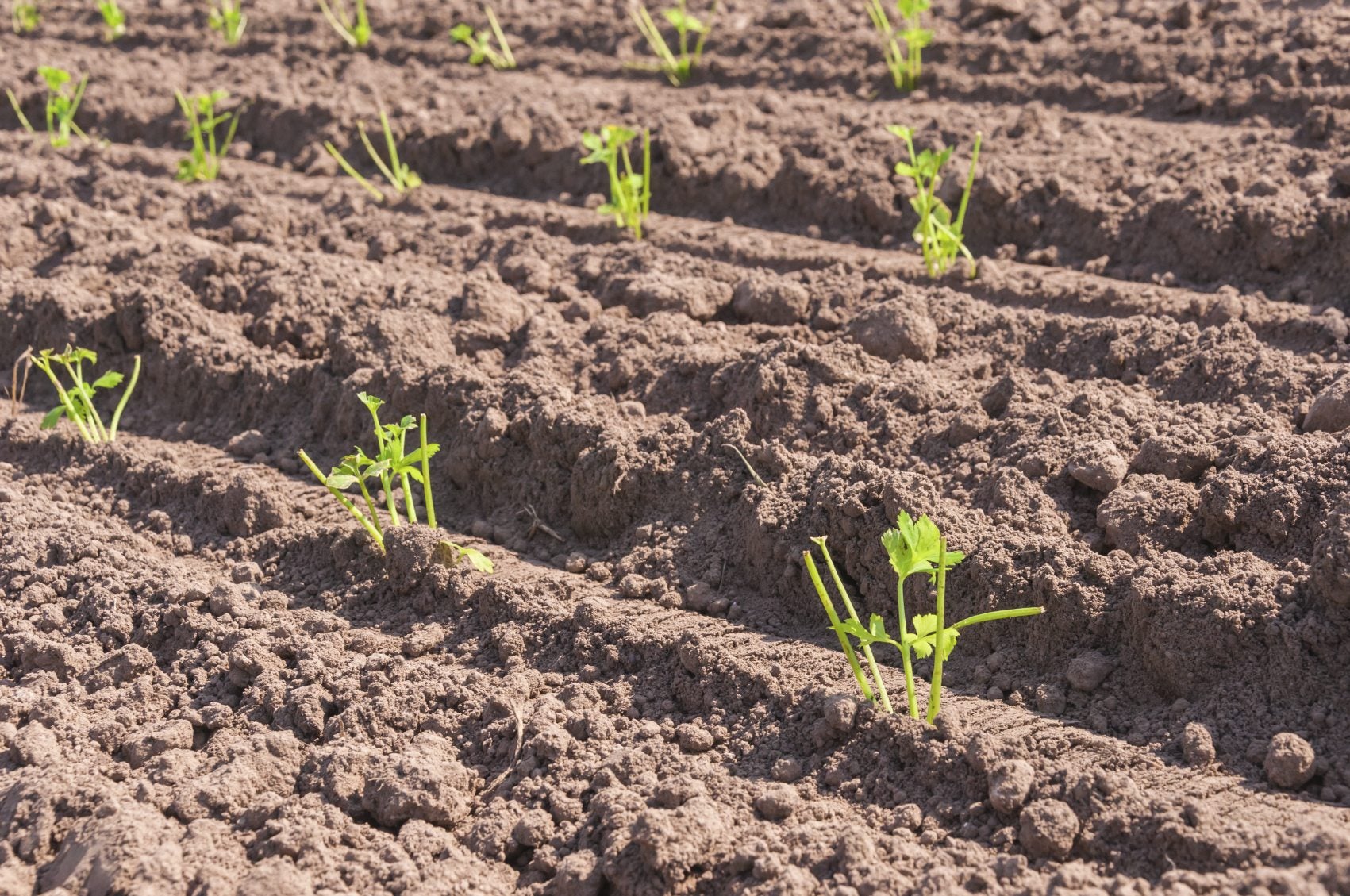Celery Plant Spacing: How Far Apart To Plant Celery


Celery crops take 85 to 120 days from transplant. This means they need a long growing season, but they have very fussy ideas about temperature. The ideal growing range is 60 to 70 degrees F. (15-21 C.). Temperatures that are too cold cause bolting and temperatures that are too warm reduce yield. In addition to temperature requirements, you need to know how far apart to plant celery, its lighting needs, soil preferences, water requirements, and other celery planting instructions. Celery has numerous health benefits and virtually no calories, so get your shovel and get planting.
Celery Planting Instructions
Celery is a biennial plant that is best when harvested in moderately warm temperatures. The stalks can get bitter and pithy in hot weather. Celery has specific soil temperature needs for germination and should experience some light on the seeds to encourage sprouting. This makes the celery planting depth important. Celery is most often transplanted in order to give it a jump start on the season before hot summer days arrive. Once it’s time to transplant in late April, celery plant spacing comes into play. Tight planting forces taller stalks. As a rule, transplants are usually used to establish celery crops. In warmer regions, you may direct sow in late summer for winter crops. Celery needs soil that is loose, rich in organic amendment, and well-draining. It has a shallow root system and needs a celery planting depth of 18 inches (46 cm.) of soil well prepared. Plant seeds in flats in February. Since the seeds need some light to germinate, sprinkle them on the surface of the soil and lightly strew sand over or sow ¼ inch (6 mm.) deep. Keep the flat in light and moderately moist until germination. Transplant young plants in late May to early April or when plants have three to four true leaves.
How Far Apart to Plant Celery
Once seedlings have several sets of true leaves and soil temperatures outside have warmed, it is time to transplant them. Allow the plants to harden off for a few days. Prepare the garden bed by incorporating plenty of compost or other ready to use organic matter. Work into the soil 2 pounds (1 kg.) per 1,000 feet (305 m.) of a 16-16-8 fertilizer. Optimum plant spacing for celery is 10 to 12 inches (25-31 cm.) apart. After a few weeks, you will need to thin the celery out to 12 inches (31 cm.) away from each other. This plant spacing for celery allows for taller petioles and better growth. Some commercial growers prefer slightly larger celery plant spacing. This is because they often clip the leaves two or three times to force shorter, more compact plants which ship more easily.
Harvest and Storage
Celery needs 1 to 2 inches (2.5-5 cm.) of water per week. Plastic mulch is a good idea to reduce competitive weeds, conserve moisture, and warm soil. You can cut individual stalks at any time. The plant is ready to harvest in its entirety when it is 3 inches (8 cm.) across. The most tender stalks are the inner petioles. These are called the heart and harvest for these generally begins in July. All parts of the plant are edible. You can store celery in the refrigerator for up to two weeks. Celery has been shown to reduce blood pressure, lower cholesterol, enhance the immune response, and even help prevent cancer. This popular crop is also grown for its roots and seeds, both useful in stocks and soups, or as a seasoning.
Sign up for the Gardening Know How newsletter today and receive a free copy of our e-book "How to Grow Delicious Tomatoes".

Bonnie Grant is a professional landscaper with a Certification in Urban Gardening. She has been gardening and writing for 15 years. A former professional chef, she has a passion for edible landscaping.